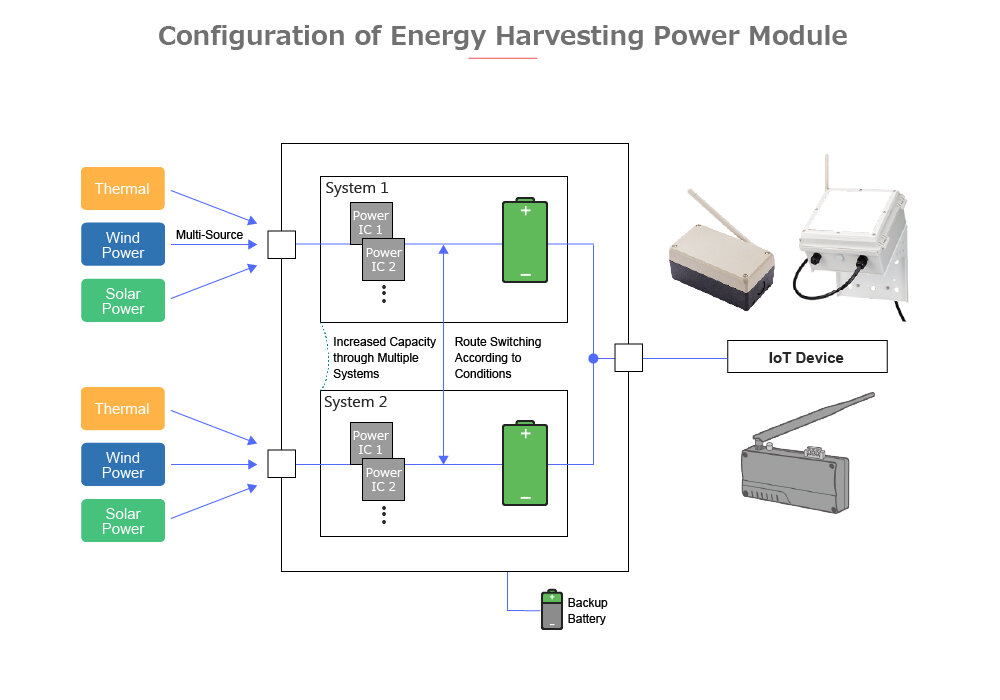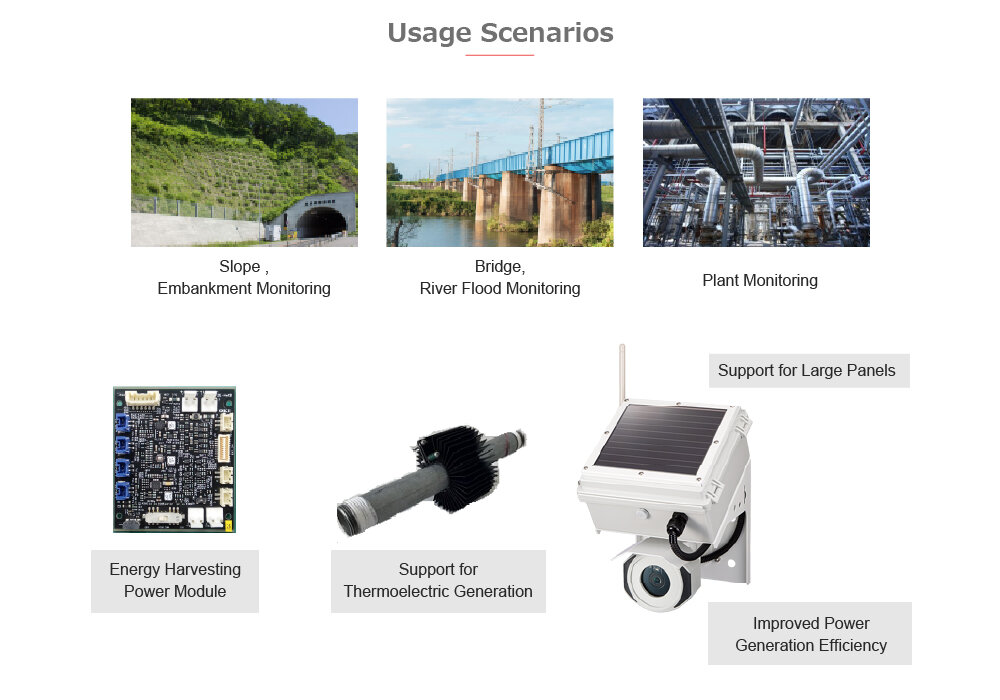Energy Harvesting and Power Saving Technologies
Outline of the Technology
Energy harvesting technology—also known as environmental power generation technology—is a technique that converts small amounts of ambient energy into electrical power for practical use. By converting energy from sources such as sunlight, wind, and heat into electricity, it enables long-term power supply without the need for charging or battery replacement. This makes energy harvesting an essential technology for implementing IoT (Internet of Things) solutions.
For example, applying energy harvesting technology to sensors and communication devices can eliminate the need for power supply wiring, thereby reducing installation costs. Maintenance costs, including those associated with battery replacement, can also be minimized.
To broaden the use cases for its Zero Energy IoT series, which utilizes solar panels as a power source, OKI is developing technologies that support multi-source compatibility (charging from various power sources) and enable configurations capable of greater power generation and storage (large-capacity solutions).

OKI’s Unique Strength Demonstrated in This Technology
OKI solutions are characterized by multi-source compatibility—enabling adaptation to various power generation sources—and large-capacity performance realized through the implementation of multiple charging lines. The current Zero Energy IoT series is compatible with solar power generation; however, as part of ongoing initiatives, OKI is developing technologies that, for example, switch between multiple power ICs depending on the scale of generation and control power supply blocks according to generation conditions. This allows adaptation not only to solar panels, but also to thermoelectric and wind power generation.
In addition, by equipping multiple power supply lines, OKI solutions achieve large-capacity performance and allow switching between lines as needed, ensuring that harvested power is stored efficiently without waste.
Potential Use Cases
OKI technologies are expected to be used in infrastructure monitoring, including remote monitoring of aging structures such as bridges and tunnels, mountain slopes, river water levels, and measurement devices. Remotely monitoring these structures and environments in real time enables detection of early signs of disasters and confirmation of damage status, leading to safer infrastructure operation and quicker situational awareness and restoration following disasters.
In remote monitoring of measurement devices, replacing traditional on-site measurement by workers with sensors powered by energy harvesting enables continuous 24-hour monitoring and reduces the required labor. Collecting and analyzing field information allows for predictive maintenance based on the progression of infrastructure deterioration or disaster circumstances, thereby contributing to a safe and secure society.

Vision for Future Development
By supporting power sources beyond solar panels, electricity generation becomes possible even in locations with little or no sunlight, such as indoors, further expanding the applications of IoT devices. For example, thermoelectric power can utilize waste heat from factories and plants for remote monitoring of equipment status, while wind power allows electricity generation in areas without sunlight or at night.
Moreover, increased capacity for power generation and storage enhances the ability to supply energy, making it possible to acquire data more frequently and carry out monitoring tasks requiring greater power. Although energy harvesting requires devices to operate on limited power, achieving higher installation flexibility and greater capacity will continue to broaden the scope of IoT device applications.
